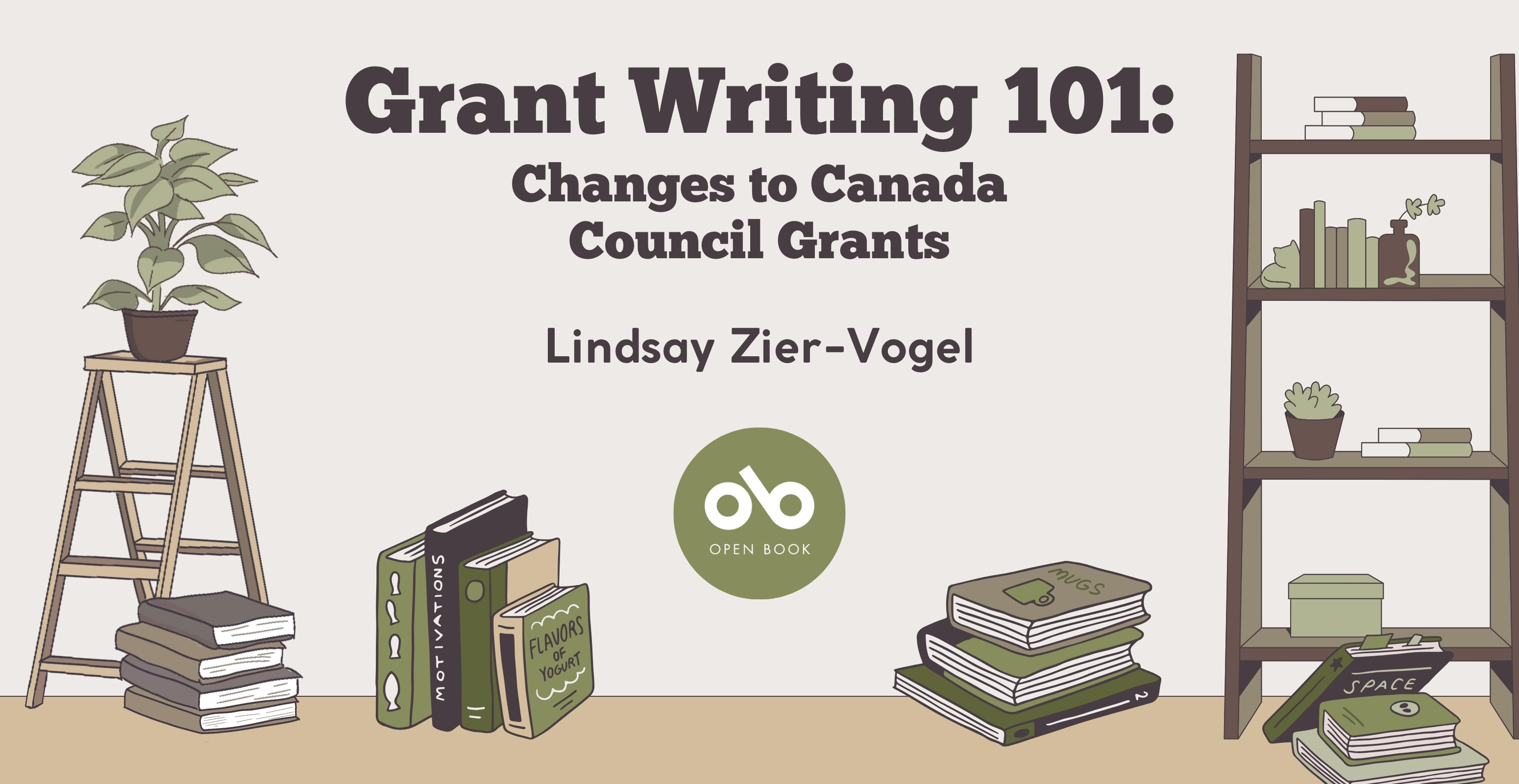Grant Writing 101: Changes to Canada Council Grants
By Lindsay Zier-Vogel
There are changes at the Canada Council! They were posted without any fanfare or public announcement, but the Canada Council for the Arts has made some significant changes to their granting programs.
Deadlines
There used to be intake end dates for their Research & Creation and Professional Development grants, but now the deadlines are rolling (you just have to apply any time before the start date of your project). You’ll hear back within four or five months of submitting your application.
Travel grants haven’t changed – you just need to apply any time before your departure—and there are still intake deadlines for their residency grants. All of the dates are available here.
A number of artists I’ve talked to are worried that without a hard deadline, it’ll be harder to get motivated to get grants in, but I spoke with the Canada Council, who said that all of these changes were considered, developed and brought forward based on conversations with the community.
“This year, exceptionally, the Council made a more significant change to the application calendar by aligning it with the calendar year instead of its fiscal year. This was done to simplify the application process for applicants, making it easier to understand how many times one can apply over the course of a year,” said a representative from the Council. “Many of the competitions have now moved to an ‘apply anytime’ model, therefore, applicants can apply when they are ready instead of waiting for a deadline. Effectively, the Council is now providing grants based on the artist’s schedule, not its own.”
Calendar Year
The council used to work on a March 1-Feb 28/29 calendar, which was confusing when figuring out application limits, but they’ve moved to the calendar year—Jan 1-Dec. 31—making it much simpler to figure out application limits.
Annual Application Limits
The limits on how many applications you could submit used to be very confusing, but they’ve simplified this and have a table posted with how many applications you can submit annually.
Your CanLit News
Subscribe to Open Book’s newsletter to get local book events, literary content, writing tips, and more in your inbox
Professional Development: 1/year
Research & Creation: 2/year
Travel within Canada: 2/year
Travel outside of Canada: 2/year
Residencies outside of Canada: 1/year
“These changes will have a positive impact on applicants,” a representative from the Canada Council said. “Moving to a calendar year greatly simplifies the understanding of how often one can apply to the Council: applicants are now only limited by the number of times they can apply to a grant as written out in the guidelines of that grant. This means that applicants simply consult one place to assess their eligibility. Previously, applicants had to consider both the limits in the guidelines and the overriding limits published on the Annual Application Limits webpage.”
Time to get writing
If you’re looking for more support with grant writing, I’ve written a lot more about it here at Open Book:
Grant writing 101: Writing a budget
Grant writing 101: How to write an artist CV
You didn’t get a grant…now what?
The views expressed by Open Book columnists are those held by the authors and do not necessarily reflect the views of Open Book.
Lindsay Zier-Vogel is an author, arts educator, grant writer, and the creator of the internationally acclaimed Love Lettering Project. After studying contemporary dance, she received her MA in Creative Writing from the University of Toronto. She is the author of the acclaimed debut novel Letters to Amelia and her work has been published widely in Canada and the UK. Dear Street is Lindsay’s first picture book, and is a 2023 Junior Library Guild pick, a 2023 Canadian Children’s Book Centre book of the year, and has been nominated for a Forest of Reading Blue Spruce Award. Since 2001, she has been teaching creative writing workshops in schools and communities, and as the creator of the Love Lettering Project, Lindsay has asked people all over the world to write love letters to their communities and hide them for strangers to find, spreading place-based love.



